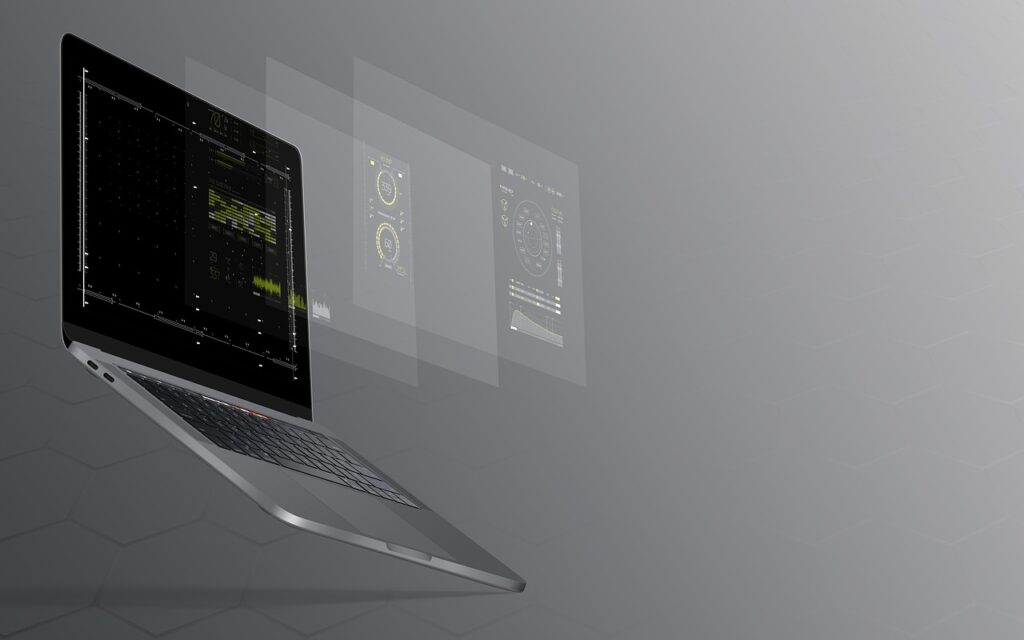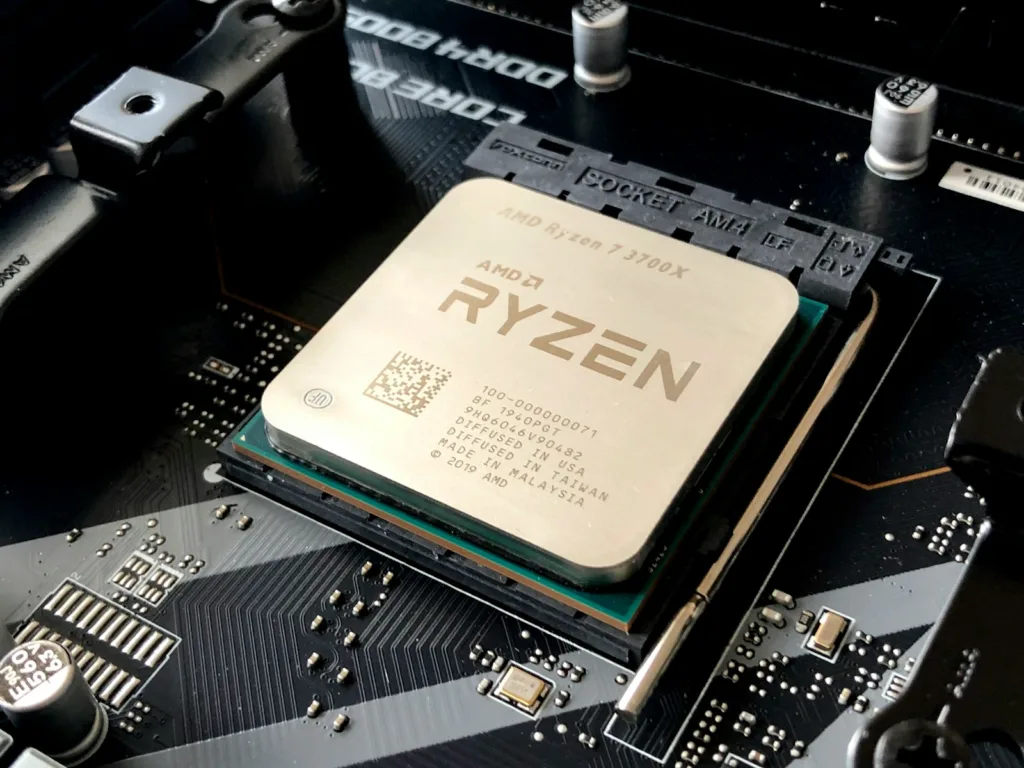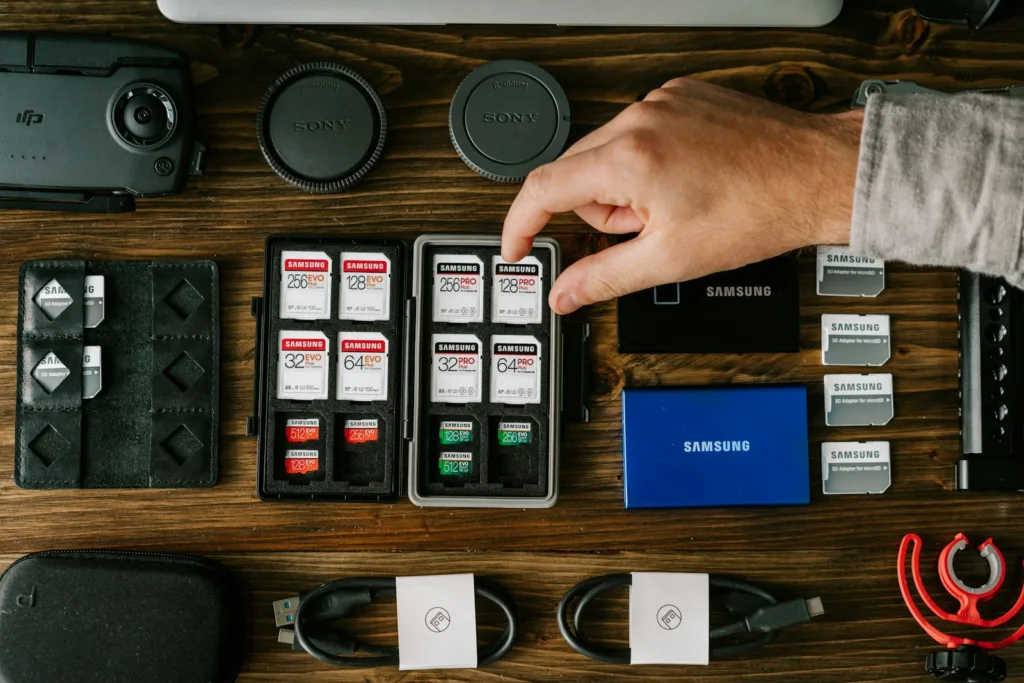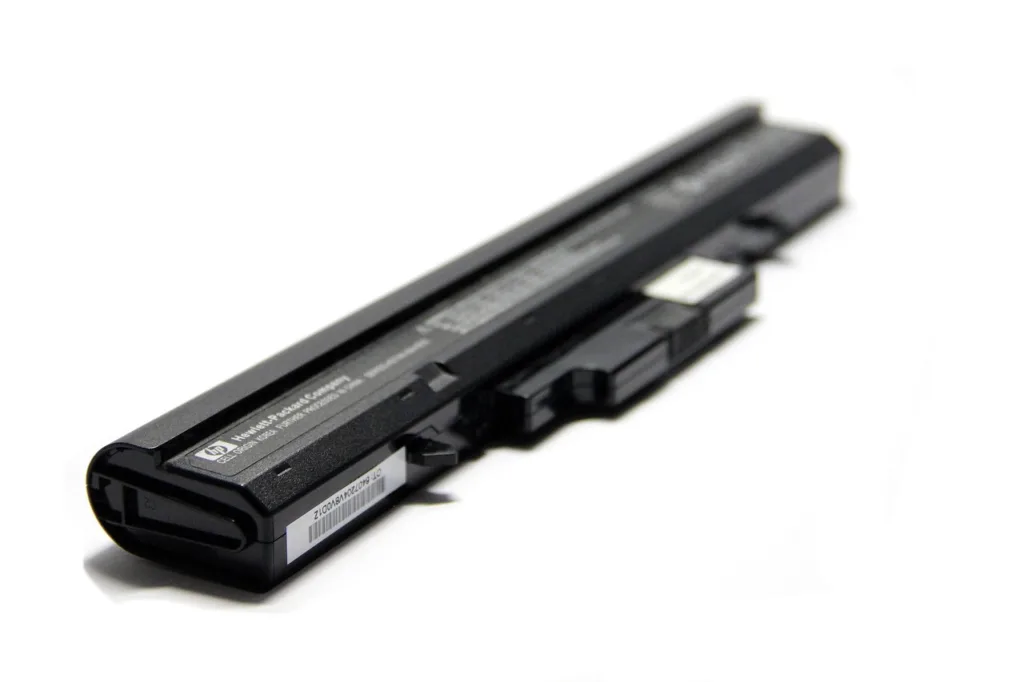This website may contain affiliate links, which means I may receive a commission if you click on a link and make a purchase. While clicking on these links won't cost you any extra money, they will help me keep this site up and running. Your support is appreciated!
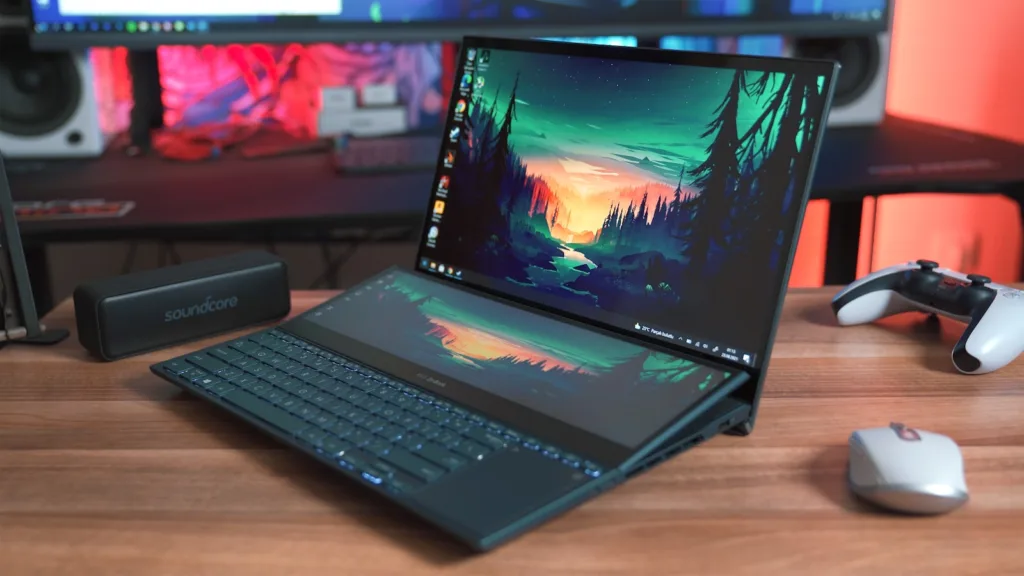
Step into the future of laptop displays, where sleek, ultra-thin screens deliver crystal-clear resolution and immersive visuals. As technology continues to evolve at a rapid pace, the future of laptop displays is shaping up to be nothing short of revolutionary. From foldable screens to augmented reality interfaces, the possibilities are endless. Join us as we take a closer look at the cutting-edge developments that are set to redefine the way we interact with our laptops. Get ready to be amazed by the next generation of laptop displays that will change the way we work, play, and create.
Table of Contents
- Embracing OLED for More Vivid Colors and Deeper Blacks
- Higher Refresh Rates for Smoother Visuals in Motion
- The Shift to 4K and Beyond for Crystal-Clear Clarity
- Touchscreen Integration for Enhanced Interactivity
- Adoption of Anti-Glare Coatings for Better Outdoor Viewability
- Slimmer Bezels for More Immersive Display Experiences
- HDR Technology for Stellar Contrast and Brightness
- Eco-Friendly Displays with Lower Power Consumption
- Foldable Screens for New Levels of Portability
- Advancements in Eye Tracking for Intuitive User Interactions
- Questions & Answers About The Future of Laptop Displays
- Key Takeaways
Embracing OLED for More Vivid Colors and Deeper Blacks
One of the most exciting advancements in laptop displays is the embrace of OLED technology. With OLED, laptop screens can deliver more vivid colors and deeper blacks than ever before. This technology uses organic compounds that emit light when an electric current is passed through them, allowing for more vibrant and true-to-life images. The future of laptop displays is definitely brighter with OLED at the forefront.
One of the main advantages of OLED displays is their ability to produce true blacks, as each individual pixel can be completely turned off when displaying the color black. This creates a stunning contrast between light and dark areas of the screen, making for a more immersive viewing experience. Additionally, OLED panels have faster response times, resulting in smoother motion and reduced motion blur. The future of laptop displays is definitely shifting towards OLED for these reasons.
However, it’s important to note that OLED displays can be more expensive to produce than traditional LCD displays, which could potentially drive up the cost of laptops featuring this technology. Also, there have been concerns about the potential for screen burn-in with OLED displays, although manufacturers have made great strides in mitigating this issue. Despite these drawbacks, the benefits of OLED displays clearly indicate that The Future of Laptop Displays is going to be dominated by this technology.
Overall, if you’re in the market for a laptop with a display that offers stunning color reproduction and deep blacks, OLED is the way to go. Companies like Dell and HP are already incorporating this technology into their premium laptop models, and it’s only a matter of time before it becomes the standard for all laptops. The future of laptop displays is definitely bright, thanks to the incredible capabilities of OLED. Embracing this technology will undoubtedly elevate your viewing experience to a whole new level.
Higher Refresh Rates for Smoother Visuals in Motion

When it comes to laptop displays, the future looks brighter and smoother than ever with the introduction of higher refresh rates. These enhanced refresh rates offer a more seamless and fluid visual experience, especially when it comes to motion-heavy content such as gaming, video editing, and animation.
With a higher refresh rate, the display can refresh the image on the screen more frequently, resulting in smoother and more lifelike motion. This means that fast-moving objects or scenes in games and videos will appear more realistic and immersive, without the blurriness or ghosting that can occur with lower refresh rates.
Many laptop manufacturers are now incorporating higher refresh rate displays into their devices, offering options such as 120Hz, 144Hz, or even 240Hz. These displays are ideal for users who demand the best visual experience, whether they are gaming enthusiasts, creative professionals, or simply anyone who appreciates a more fluid and responsive display.
While higher refresh rate displays undoubtedly offer a superior visual experience, it’s important to note that they may consume more power and could potentially impact battery life. However, for many users, the trade-off is more than worth it for the incredibly smooth and immersive visuals that these displays provide.
The Shift to 4K and Beyond for Crystal-Clear Clarity
The Future of Laptop Displays is here, and it’s all about . With technology advancing at a rapid pace, laptop displays are reaching new heights in resolution and sharpness. Gone are the days of fuzzy, pixelated screens – the future is all about stunning visuals and immersive experiences.
So, what exactly does the shift to 4K and beyond mean for laptop displays? Let’s break it down:
- Unparalleled Clarity: The move to 4K resolution means four times the number of pixels compared to traditional HD displays. This results in incredibly sharp images and text, making every detail pop with vivid clarity.
Immersive Experience: With higher resolution comes a more immersive viewing experience. Whether you’re watching movies, playing games, or working on creative projects, the future of laptop displays will transport you to a whole new world of realism and depth.
Enhanced Productivity: Crisp, clear visuals are not just for entertainment – they also have practical benefits. From reading text to editing photos and videos, the future of laptop displays will make every task more enjoyable and efficient.
- Choosing the Right Laptop: When it comes to the future of laptop displays, it’s crucial to choose the right device. Look for laptops that not only offer 4K resolution but also have the processing power and graphics capabilities to truly unleash the potential of high-resolution displays. Some top recommendations for laptops with exceptional displays include the Dell XPS 15, the MacBook Pro, and the HP Spectre x360.
The future of laptop displays is incredibly exciting, with 4K and beyond setting a new standard for clarity and visual fidelity. Whether you’re a professional in need of top-notch color accuracy or a gamer seeking the ultimate visual experience, the advancements in laptop displays will not disappoint. So, embrace the shift to 4K and beyond, and get ready to be mesmerized by the breathtaking clarity of the future.
Touchscreen Integration for Enhanced Interactivity

When it comes to the future of laptop displays, one of the most exciting developments is the integration of touchscreen technology. This innovation allows for a level of interactivity and control that was previously only seen in smartphones and tablets. By incorporating touch capabilities into laptop displays, users can enjoy a more intuitive and immersive computing experience.
Advantages of Touchscreen Integration
- Enhanced interactivity: Touchscreen displays make it easier to navigate and interact with content, whether it’s scrolling through web pages or zooming in on photos.
- Improved productivity: With touch capabilities, tasks such as editing documents and manipulating images become more efficient and intuitive.
- Multi-functionality: Touchscreen laptops can function as both traditional computers and as tablet devices, providing the best of both worlds.
Drawbacks of Touchscreen Integration
- Increased cost: Touchscreen laptops often come with a higher price tag compared to non-touch models.
- Reflections and smudges: Touchscreens can be prone to glare and fingerprint smudges, which may affect visibility and cleanliness.
- Battery consumption: The use of touchscreen technology can have a slight impact on battery life compared to non-touch laptops.
Overall, the integration of touchscreen technology into laptop displays offers a compelling blend of functionality and versatility. As the future of laptop displays continues to evolve, it’s clear that touch capabilities will play a significant role in shaping the way we interact with our devices.
Adoption of Anti-Glare Coatings for Better Outdoor Viewability
As we look to The Future of Laptop Displays, one of the key advancements that has gained traction in recent years is the adoption of anti-glare coatings. These coatings are designed to reduce the reflection of light on the screen, making it much easier to view the display in bright outdoor conditions.
So, what are the benefits of embracing anti-glare coatings for laptop displays? Let’s take a closer look:
- Enhanced Outdoor Viewability: Anti-glare coatings significantly reduce glare, making it easier to see the screen when using your laptop outside.
- Improved User Experience: With reduced glare, users can enjoy a more comfortable and enjoyable viewing experience, whether they’re working in a park or catching up on their favorite show in the backyard.
When considering The Future of Laptop Displays, it’s important to weigh the pros and cons of anti-glare coatings. While they certainly offer significant benefits, there are a few drawbacks to keep in mind:
| Pros | Cons |
| Enhanced outdoor viewability | May slightly affect screen clarity |
| Improved user experience | Additional cost for the coating |
Overall, the adoption of anti-glare coatings is a positive step forward for The Future of Laptop Displays. While they may come with a few drawbacks, the benefits of improved outdoor viewability and enhanced user experience make them a compelling option for laptop manufacturers and consumers alike.
Slimmer Bezels for More Immersive Display Experiences
When it comes to the future of laptop displays, one of the most exciting developments is the trend towards slimmer bezels. These narrow borders around the screen not only make for a more aesthetically pleasing design, but they also contribute to a more immersive display experience for users. With slimmer bezels, the focus is entirely on the content being displayed, whether it’s watching a movie, playing a game, or working on a creative project.
Slimmer bezels allow for a larger screen size within the same physical dimensions of a laptop, maximizing the viewing area and making the display feel more expansive. This creates a more engaging and captivating visual experience, whether you’re using your laptop for work or entertainment. Additionally, slim bezels contribute to a sleek and modern look, giving laptops a more premium feel.
The elimination of chunky bezels also means that laptops can be more compact and portable without sacrificing screen size. This makes them easier to carry around and more convenient to use in various settings. Whether you’re on the go or working from a cozy café, a laptop with slimmer bezels offers a more enjoyable and integrated display experience.
Overall, the transition to slimmer bezels represents a significant advancement in laptop display technology. This innovation not only enhances the visual appeal of laptops but also improves the functionality and portability of these devices. As manufacturers continue to push the boundaries of display design, we can expect even more immersive and impressive viewing experiences from the future of laptop displays.
HDR Technology for Stellar Contrast and Brightness

When it comes to the future of laptop displays, HDR technology is paving the way for stellar contrast and brightness. This cutting-edge technology is revolutionizing the way we experience visuals on our laptops, providing an unparalleled level of depth and vibrancy.
What is HDR Technology?
HDR, or High Dynamic Range, is a display technology that enhances the contrast and brightness of images, creating a more lifelike and immersive viewing experience. This technology allows for a wider range of colors and a greater level of detail, resulting in stunning visuals that truly pop off the screen.
Advantages of HDR Technology for Laptop Displays
1. Enhanced contrast and brightness
2. Greater color accuracy
3. Improved detail and depth in images
4. Immersive viewing experience
Recommendation: Investing in a Laptop with HDR Technology
When considering the future of laptop displays, it’s clear that HDR technology is a game-changer. For those looking to elevate their visual experience, investing in a laptop with HDR technology is a no-brainer. Companies like Dell and Lenovo are leading the way in incorporating HDR technology into their laptop displays, providing users with stunning visuals and a more immersive computing experience.
Eco-Friendly Displays with Lower Power Consumption
The future of laptop displays is here, and it’s all about eco-friendly technology with lower power consumption. With the increasing concern for environmental sustainability, laptop manufacturers are now prioritizing displays that not only deliver top-notch performance but also consume less power, reducing their carbon footprint. This shift in focus is revolutionizing the way we interact with technology, making it more eco-conscious and energy-efficient.
One of the key features of the future of laptop displays is OLED (organic light-emitting diode) technology. Unlike traditional LCD displays, OLED technology does not require a backlight, which significantly reduces power consumption. Additionally, OLED displays are known for their vibrant colors, deep blacks, and higher contrast ratios, providing a superior visual experience while being environmentally friendly.
Another groundbreaking development in the world of laptop displays is the integration of low-power consuming chipsets. These chipsets are designed to optimize power usage without compromising performance, allowing laptops to operate seamlessly while consuming minimal energy. This advancement is a game-changer for users who rely on their laptops for work, entertainment, and creative endeavors, as it not only extends battery life but also reduces the overall environmental impact.
Furthermore, laptop manufacturers are embracing energy-efficient panel designs that minimize power consumption without sacrificing image quality. This innovative approach involves utilizing materials and manufacturing techniques that prioritize energy savings, resulting in displays that are both visually stunning and eco-friendly. These advancements are a testament to the industry’s commitment to sustainability and efficiency in the production of laptop displays.
The future of laptop displays is bright, both figuratively and literally, with a focus on eco-friendly technology and lower power consumption. As consumers, embracing these advancements not only benefits the environment but also enhances the overall user experience, making it a win-win for everyone. With the integration of OLED technology, low-power consuming chipsets, and energy-efficient panel designs, the future of laptop displays is paving the way for a greener and more sustainable technological landscape.
Foldable Screens for New Levels of Portability
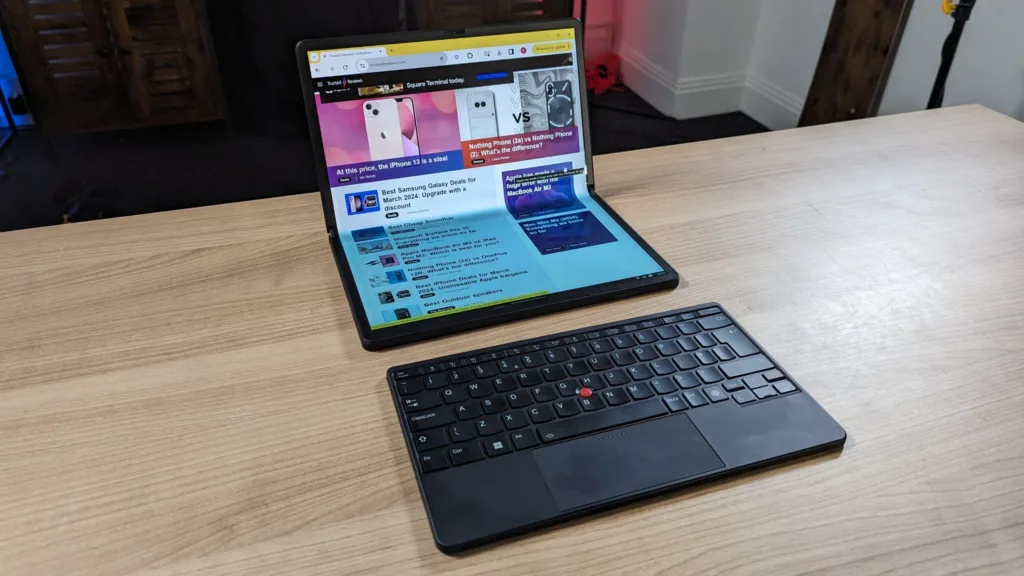
One of the most exciting developments in laptop displays is the advent of foldable screens. These innovative displays offer new levels of portability, allowing users to easily take their laptops on the go without sacrificing screen size or quality. The future of laptop displays is here, and foldable screens are leading the charge.
A key benefit of foldable screens is their ability to expand and contract, providing a larger display when needed and a more compact form for easy transport. This flexibility makes them ideal for travelers, students, and anyone who needs a powerful computer that can go anywhere. The Future of Laptop Displays is all about versatility, and foldable screens deliver in spades.
Another exciting aspect of foldable screens is their potential for multitasking. With the ability to split the screen into multiple sections or even fold it into a stand, users can easily work on multiple projects at once or collaborate with colleagues in a whole new way. The future of laptop displays is all about productivity, and foldable screens are at the forefront of this revolution.
While foldable screens offer incredible potential, it’s important to consider the current limitations, such as cost and durability. As the future of laptop displays continues to evolve, we can expect these issues to be addressed, but for now, it’s important to weigh the pros and cons before investing in a foldable screen laptop. Some brands, such as Samsung and Lenovo, are already leading the way in this technology, and are worth considering for those who are ready to embrace the future of laptop displays.
Advancements in Eye Tracking for Intuitive User Interactions

The future of laptop displays is evolving with the advancements in eye tracking technology, creating more intuitive user interactions and immersive experiences. Eye tracking technology is revolutionizing the way we interact with laptop displays, providing a more natural and seamless user experience.
With eye tracking, users can control their laptops simply by looking at different parts of the screen. This technology allows for hands-free interactions, making it easier for users to browse the web, play games, and navigate through applications. The future of laptop displays is all about making user interactions more intuitive and effortless.
One of the most exciting advancements in eye tracking for laptop displays is the integration of gaze-based gestures. This allows users to perform actions such as scrolling, zooming, and selecting items on the screen using only their eyes. This not only enhances the user experience but also opens up new possibilities for accessibility and assistive technologies.
In addition to improving user interactions, eye tracking technology is also being used to enhance the overall display quality of laptops. With gaze tracking, laptops can adjust the brightness and focus of the display based on the user’s eye movements, creating a more comfortable and immersive viewing experience. The future of laptop displays is bright, with eye tracking technology leading the way towards more intuitive, user-friendly interactions.
Questions & Answers About The Future of Laptop Displays
What are the latest innovations in laptop display technology?
The latest innovations in laptop display technology include OLED screens, 4K resolution, and ultra-thin bezels for a more immersive viewing experience.
Will foldable displays become the new standard for laptops?
While foldable displays have gained attention in the smartphone market, their adoption in the laptop industry is uncertain due to the complexity of incorporating the technology into a larger form factor.
How will AR and VR impact laptop display development?
The rise of augmented reality (AR) and virtual reality (VR) will drive the demand for higher resolution, faster refresh rates, and improved color accuracy in laptop displays to provide a more immersive experience.
Are we approaching the limits of display resolution on laptops?
With advancements in pixel density and screen size, the limits of display resolution on laptops are constantly being pushed, with 8K resolution and beyond on the horizon.
What role will sustainability play in the future of laptop display manufacturing?
Sustainability will be a key focus for laptop display manufacturers, with efforts to reduce energy consumption, minimize waste, and utilize eco-friendly materials in the production process.
How will touchscreen technology evolve in future laptop displays?
Future laptop displays may feature improved touchscreen responsiveness, gesture recognition, and support for stylus input to enhance user interaction and productivity.
What impact will flexible and transparent display technology have on laptops?
Flexible and transparent display technology has the potential to revolutionize laptop design, enabling new form factors and adaptable screens for enhanced functionality.
Can we expect holographic displays to become a reality in laptops?
While holographic displays are still in the experimental stage, their integration into laptops could offer a groundbreaking visual experience, though practical challenges remain.
Will eye-tracking and biometric integration become standard features in laptop displays?
The integration of eye-tracking technology and biometric sensors into laptop displays has the potential to enhance security, streamline user authentication, and enable new forms of interaction.
How will advancements in display technology impact battery life in laptops?
Advancements in display technology, such as more power-efficient panels and adaptive refresh rates, have the potential to extend battery life in laptops, offering a balance between performance and energy efficiency.
Key Takeaways
Thanks for reading about the exciting developments in laptop display technology! As we move into the future, we can expect to see even more advancements that will revolutionize the way we interact with our laptops. To stay updated on the latest laptop technology trends and find the best laptops with cutting-edge displays, visit GoodLaptops.com. And for more in-depth insights into the future of laptop displays, check out our article on laptop technology trends.
Please feel free to leave comments, suggestions or share experiences about the future of laptop displays.

